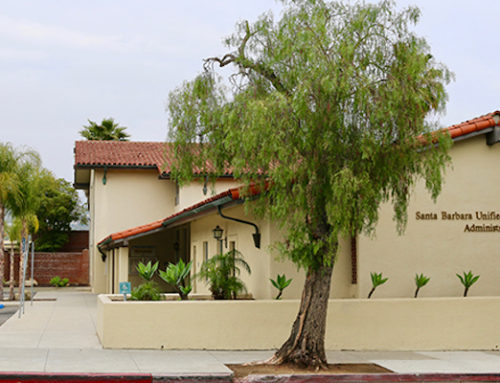Introduction to the montecito country club easement dispute
Nestled in the picturesque hills of Santa Barbara, the Montecito Country Club is understood for its lovely views and distinctive facilities. However, in the back of this idyllic facade lies a brewing typhoon: the Montecito U. S . A . Membership easement dispute. This controversy has ignited fierce debates about property rights and community values, drawing in citizens, golfers, and legal experts alike. As tensions push upward, questions abound—who owns the right to enter these coveted lands? What are the results for neighbourhood owners? Join us as we delve into this complex case demanding our understanding of land use and possession inside a beloved network.
The Easement Dispute: montecito country club easement dispute

The Montecito Country Club easement dispute has captured the attention of neighbourhood citizens and belongings proprietors alike. This conflict revolves around access rights to a portion of land intertwined with the club’s expansive grounds. Local authorities were drawn into the fray as diverse events grappled over claims to these easements. The implications stretch past the physical right of entry; they touch on deeper troubles regarding network identification and ownership.
Residents nearby are worried about how the effects will affect their rights to personal belongings. As discussions continue, feelings run high on both sides of the argument. This dispute is a stark reminder that tensions between land use and access privileges can simmer below the floor, even in idyllic settings like Montecito. With stakes so personal for lots, every meeting and public remark holds enormous weight in shaping future interactions among friends and establishments.
Partiesmontecito country club easement dispute
The Montecito Country Club easement dispute has drawn many stakeholders into the fray. On one side, the club aims to maintain its operations and shield its belongings rights.
Then there are the nearby residents who sense their land usage strongly and gain entry into network areas. Each birthday celebration brings precise views shaped by non-public experiences and vested pursuits.
Local government entities additionally play an essential role in mediating these discussions. Their involvement can help clarify policies or exacerbate tensions among the events concerned. Environmental groups have entered the verbal exchange, too, advocating for upkeep efforts whilst balancing improvement needs. This numerous set of voices adds layers to an already complicated situation surrounding asset rights in this affluent place. The various motivations create a complex net that complicates locating unusual floors among anybody concerned.
Arguments of montecito country club easement dispute
The Montecito Country Club easement dispute has sparked various reviews by most concerned parties. One aspect argues for maintaining traditional get-entry to routes, emphasizing the network’s historical past and accessibility. They believe those pathways are essential for preserving local subculture and fostering a sense of belonging. Conversely, warring parties claim that such easements avert improvement possibilities. They argue that belonging proprietors have to have autonomy over their land without restrictions imposed by using historical rights. This attitude highlights the significance of property rights for men and women in present-day society.
Environmental concerns also influence this debate. Some stakeholders assert that preserving specific routes is vital to guarding the natural landscapes and ecosystems around the club’s site. The balance between improvement and conservation remains contentious.
As discussions continue, each aspect presents compelling arguments reflecting broader societal values regarding property ownership, network wishes, and environmental stewardship.
Impact on the Community and montecito country club easement dispute
The Montecito Country Club easement dispute has stirred significant feelings in the community. Residents intently watch how this battle unfolds, affecting local belonging rights and land use. Many locals have explicit situations over capacity adjustments in getting the right of entry to shared spaces. The country membership’s selections should set a precedent that impacts future disputes at some point in the location.
Additionally, enterprise owners nearby worry about the repercussions on their livelihoods if network access is constrained. A vibrant environment fosters growth; disruption could result in decreased foot traffic and patronage. Neighbours additionally fear approximately the broader implications for absolute property values. Property desirability hinges on on hand services, making this trouble more than simply legal—it is personal for those who call Montecito home. As discussions continue, citizens stay vigilant, hoping their voices will shape effects that honour each way of life and progress in their loved community.
Legal Actions montecito country club easement dispute
The Montecito Country Club easement dispute has escalated into a prison battleground. Various parties have complained, declaring their perceived rights over the property in query.
Court files screen a couple of motions and counter-motions. Each side is vigorously protecting its position, hoping for a favourable ruling.
Legal professionals point out that this example could set sizable precedents concerning easements and property rights in California. The stakes are high, not just for those without delay but also for neighbouring homes probably affected by the outcome. As hearings unfold, public attention stays constant on this arguable issue. Community contributors often express frustration at how long felony tactics can take. They wonder when resolution will come and what it will mean for future land use inside the region.
Resolution Attempts and Montecito country club easement dispute.
Efforts to resolve the Montecito Country Club easement dispute are ongoing. Mediation sessions have taken place to bridge the distance between opposing parties. These discussions often involve community participants, club representatives, and criminal advisors. Some stakeholders propose opportunity pathways that would fulfil both sides. Ideas vary from adjusting admission to routes to enhancing recreational spaces for public use. The goal is a compromise that respects property rights while preserving community pastimes.
Written proposals have also circulated among worried organizations. They intend to define potential solutions and collect feedback before formal agreements are made. Trust-constructing measures are essential in this system; open dialogues can result in shared expertise. Despite those efforts, emotions run high on both sides of the debate. Each meeting exhibits deeper concerns about land use and ordinary harmony in the network’s fabric.
Implications for Property Rights and montecito country club easement dispute
The Montecito Country Club easement dispute raises significant questions about property rights. As the traces between private possession and shared entry blur, stakeholders are left to navigate a murky prison panorama. Property proprietors regularly consider they hold absolute control over their land. However, this situation highlights that existing easements can complicate those assumptions. The balance of privileges as opposed to regulations will become essential in these discussions.
Legal precedents set by such disputes may additionally redefine community boundaries for years to come. Local governments should be pressured to clarify rules surrounding easements and belongings utilization. Moreover, residents will look carefully as consequences affect individual homes and collective beliefs within neighbourhoods. This scenario serves as a critical reminder of the interconnectedness of our rights with those of our friends.
Reflection on Similar Cases and montecito country club easement dispute
Easement disputes are regularly resolved in groups throughout the state, each case highlighting precise nuances. Like the Montecito Country Club easement dispute, many contain competing interests of asset proprietors and community institutions. Take, for instance, conflicts around shared pathways in residential neighbourhoods. These conditions can escalate when one birthday party asserts its right over a passageway while others declare its historic use.
In another instance, a golf path faced backlash from residents who wanted admission to public land adjacent to its vegetables. The anxiety mirrored what was unfolding at Montecito as stakeholders grappled with their rights rather than communal entertainment. Such cases display deep-seated emotions tied to asset ownership and space within any network. They function as reminders that these discussions are not simply felonies; they touch on non-public testimonies and collective memories intertwined with land use decisions.
Conclusion: Finding of montecito country club easement dispute
The Montecito Country Club easement dispute has revealed complicated problems surrounding belonging rights that resonate deeply inside the community. As various parties navigate their positions, it is clear that this situation is more than just criminal warfare; it reflects significant subject matters of ownership, access, and network identification.
As discussions continue around the easement’s implications for the USA club and neighbouring houses, all eyes are on capability resolutions. The final results will shape the best neighbourhood dynamics and set precedents for comparable instances in different communities facing asset disputes.
Moving ahead, stakeholders must stay vigilant about communication and collaboration while seeking solutions that honour human rights and communal pursuits. Balancing those factors can result in a more harmonious decision where each person’s wishes are respected.
This ongoing discourse surrounding the Montecito Country Club easement dispute is a crucial reminder of how essential it is to interact constructively with our friends over asset worries—specifically once they affect broader community values.
